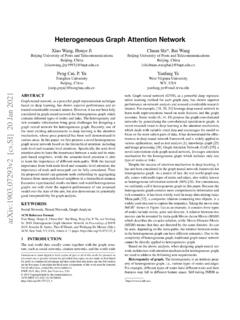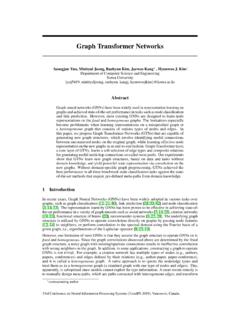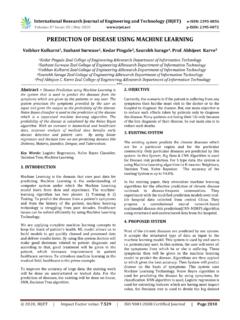Transcription of Segmentation and Targeting - Pennsylvania State University
1 Segmentationand TargetingSegmentation and targetingOutline The Segmentation - Targeting -positioning (STP) framework Segmentation The concept of market Segmentation Managing the Segmentation process Deriving market segments and describing the segments Step 1: Cluster analysis Step 2: Discriminant analysis TargetingSegmentation and targetingLearning goals Understand what STP means and how it creates value Explain the concept of market Segmentation Choose relevant Segmentation bases based on differentiability and identifiability Know the steps in designing a Segmentation study Perform a cluster analysis to derive market segments Conduct a discriminant analysis to characterize the market segments Select segments for Targeting using portfolio analysisSegmentation and targetingSTP Segmentation , Targeting , PositioningProductPriceCommunicationDist ributionAll consumersin the marketTarget marketsegment(s)
2 Marketing mixMarketing strategiesof competitorsTarget marketingand positioningSegmentation and targetingHow STP creates value More focused marketing efforts can better meet customer needs Customers develop preferences for offerings that deliver greater value and satisfaction Customers become loyal to the brand and the firm if the brand/firm provides value and satisfaction Loyalty leads to greater market share and insulates the firm from competition Profitability increasesSegmentation and targetingMotivation for market Segmentation One size fits all usually doesn t work (all potential customers are not created equal) Segment-of-one marketing is often not feasible (costs outweigh benefits) Compromise: Market segmentationSegmentation and targetingMarket segmentationPartitioning a market that is characterized by heterogeneity in customers response to the marketing mix into more and targetingDifferentiating segments based on differences in customer responsemarketingvariableResponseSegment BSegment AA1A2B1B2x1x2 Segmentation and targetingSegmentation basesGeneralProduct-specificObservableLa tentObservable featuresof the physical andsocial environment (esp.)
3 Demographics) Values, lifestyles and psychographics, personality variables AwarenessProduct attributes and benefits Willingness to buyBehavioral characteris-tics (user status, loyalty status, usage rate)Usage situationsSegmentation and targetingProblems with many segmentations Markets can be segmented using many different variables, but these variables may not capture differences in response to the marketing mix; Product-specific Segmentation bases are usually better indicators of differences in customer response than general Segmentation bases; Particularly motivational variables (purchase motivations, customer needs, benefits sought) are important for Segmentation ; However, they are not directly observable, so they have to be supplemented with managerially useful descriptors that characterize the segments; Segmentation and targetingIdentifying segment membersmarketingvariableResponseSegment BSegment AA1A2B1B2x1x2 Who s this?
4 Who s this? Segmentation and targetingSegmentation criteria The essence of market Segmentation : market response is homogeneous within segments and heterogeneous between segments (differentiability) individuals can be assigned to a segment based on a meaningful profile of segment characteristics (identifiability) Additional requirements: the size and purchasing power of relevant segments can be determined (measurability) the company is able to develop a marketing mix that will appeal to the members of a given segment (actionability) members of a segment can be reached with the appropriate marketing mix (accessibility) segments and segment membership do not change in the short run (stability) Segmentation and targetingRecommendation Use product-specific Segmentation bases (esp.)
5 Purchase motivations and product benefits sought) to derive segments ( Segmentation variables): difference in response is key Use general Segmentation bases (esp. readily observable customer characteristics) to profile the segments (discriminant variables): identifiability is keySegmentation and targetingManaging the Segmentation process Define the Segmentation problem Objectives, resources, and constraints Identify data needs Primary vs. secondary data Sample definition (category users, existing customers, heavy vs. light users, loyalsvs. switchers) Segmentation and discriminant variables (based on available data and/or qualitative research) Conduct the Segmentation study and analyze the data Step 1: Derive the market segments (cluster analysis) Step 2: Describe the market segments (discriminant analysis) Implement the resultsSegmentation and targetingStep 1: Deriving market segments The idea is to group (potential) customers who are similar in their response to some element of the marketing mix ( , response to different product features, including price; response to different advertising or promotion campaigns.
6 Response to different distribution channels) Choose Segmentation variables that capture relevant response differences, which can eventually be used to position the firm s offering to the right customers; Assume that we have data for a relevant sample of customers on a set of Segmentation variables of interest; how can we perform a Segmentation analysis? Segmentation and targetingObservations / Segmentation VariablesR11010R289R356R465R533R612A simple Segmentation example:Preferences of 6 consumers for 2 attributes of beerSegmentation and targetingA simple Segmentation example:Preferences of 6 consumers for 2 attributes of beerSegmentation and targetingA simple Segmentation example.
7 Preferences of 6 consumers for 2 attributes of beerSegmentation and targetingActual segments in the beer market(based on Consumer Reports)bitterlessmoreCraft alesCraft lagersImported beerRegular and ice beerLight beersSegmentation and targetingSegmentation in the real world In practice, we have Many potential customers Many Segmentation variables What to do?Custer analysis to the rescue! Segmentation and targetingCluster analysis Basic question: How can objects (customers, brands, stores, etc.) be grouped such that objects within the same cluster are similar and objects in different clusters are dissimilar? In Segmentation , the objects of interest are customers and similarity is assessed in terms of relevant Segmentation variables; Issues in cluster analysis: How is similarity measured?
8 How are clusters formed? How many clusters should be distinguished? How should the clusters be interpreted? Segmentation and targetingHow is similarity measured? Overall measures of similarity [not relevant here] Direct measures of overall similarity Indirect measures of overall similarity ( , switching data) Derived measures of similarity ( , based on preferences for certain benefits) Metric data Correlational measures ( , similarity in the profile of ratings across certain benefits) Distance measures (Euclidean, city-block) Non-metric data Matching coefficients ( , extent to which customers want the same features in a product) Segmentation and targetingEuclidean distance 1 6=( 2 1)2+( 2 1)2R1R6 Segmentation and targetingSimilarity data as input to cluster and targetingHow are clusters formed?
9 Hierarchical cluster procedures: result in a tree-like (nested) structure that can be represented in a dendrogram; Agglomerative (bottom-up) methods: initially there are as many clusters as objects and then objects are combined; Single linkage Complete linkage Average linkage Centroid method Ward s method Divisive (top-down) methods: initially there is one large cluster that is subsequently divided into smaller clusters; Non-hierarchical cluster (partitioning) procedures: K-means clustering: an initial partition into G groups is chosen and objects are reassigned if the total error can be reduced; solutions for different G are analyzed; Segmentation and targetingAgglomerative methods Single linkage: similarity is based on the shortest distance between any two points in two clusters (nearest-neighbor approach); at each step, the most similar clusters are joined; Complete linkage: similarity is based on the largest distance between any two points in two clusters (farthest-neighbor approach); Average linkage: similarity is based on the square root of the average of the squared distances of all objects in two clusters; Centroid method: similarity is based on the distance between the centroids of the clusters.
10 Ward s method: clusters are formed such that the increase in within-group variability is minimized; Segmentation and targetingClustering by and targetingHierarchical agglomerative methodsSegmentation and targetingHow many clusters should be formed? No generally accepted stopping rule is available; In a hierarchical cluster solution, inspect the dendrogram(tree graph ), which shows the distance (dissimilarity) at which two clusters are joined; Look for the point in the dendrogramwhere combining two clusters results in a large increase in the within-cluster heterogeneity; Ultimately, a cluster solution should be practically useful; try out different solutions and choose the one that is most interpretable and yields the most actionable and targetingDendrogramSegmentation and targetingHow should the clusters be interpreted?




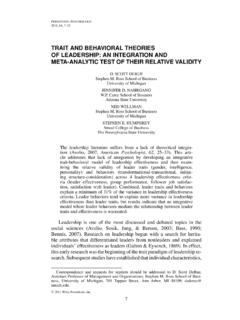

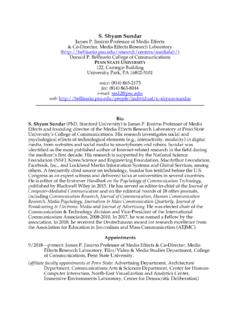

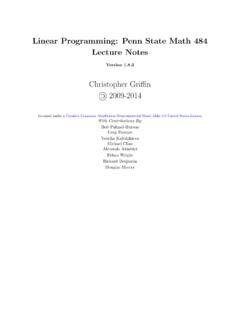

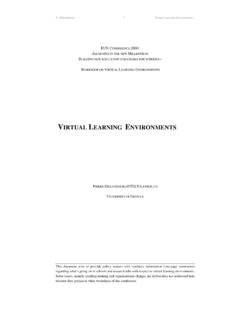
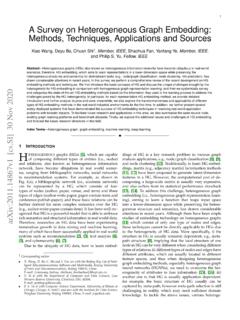
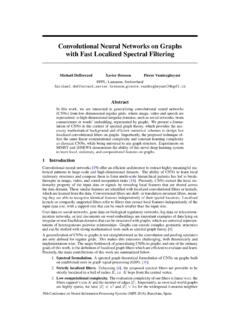

![arXiv:2106.06090v1 [cs.CL] 10 Jun 2021](/cache/preview/7/6/a/1/c/a/d/d/thumb-76a1caddd29bcbb1b857bf1a9d94f541.jpg)
